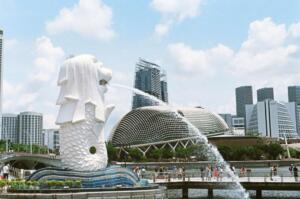Singapore-Malaysia’s water row

Escalating demand for water and population growth, coupled with floods, droughts and pollution, has led to a decline in water catchment areas, especially in Johor. The raw water capacity of the basin has started to diminish, highlighting the growing strain on the region’s water resources.
Dr. TamilSalvi Mari, The Star
MALAYSIA and Singapore have been locked in a culinary showdown over nasi lemak, each claiming their version reigns supreme. But beneath this entertaining gastronomic rivalry a bigger battle rumbles away: one over water.
Singapore’s water scarcity issues force it to rely on imported water for a large part of its day-to-day supply.
Singapore’s water agreements with Malaysia date back to 1927 and have been vital but contentious. Under the agreement, active until 2061, Singapore pays Malaysia for the right to draw over 960 million litres of water per day from the Johor River.
But since the early 2000s, Malaysia and Singapore have been at odds over the fairness of the agreement. Malaysia is pushing to renegotiate to strike what it feels is a fairer value for the water it sells while Singapore has stood firm by the terms of the existing agreement.
Malaysia believes the agreement effectively prioritises Singapore’s water security over its own.
The latest flare up came in November 2023 when Malaysia pushed for a review of the agreement due to “certain issues”. As the standoff continues, both nations are exploring alternatives to reduce reliance on imported water.
Singapore’s water strategy includes a water recycling initiative called NEWater and desalination.
Both initiatives buoy the government’s hope for water self-sufficiency. It says NEWater can meet around 30% of Singapore water needs now and could fulfil up to 55% by 2050, while desalination could meet 85% of its needs in future.
Some academics suggest there is a “good chance” Singapore will achieve water self-sufficiency by 2061, when the current agreement with Malaysia is set to expire. Doing so would mark a major milestone in water management and security.
However, neither initiative is without its environmental concerns.
Singapore boasts five desalination plants. The central concern stems from the energy-intensive method used in Singapore’s desalination process, reverse osmosis.
Reverse osmosis forces seawater through semi-permeable membranes under high pressure, leading to greenhouse gas emissions. Solar-powered desalination plants could ease some of the issues, but it is not a silver bullet.
Desalination plants require a steady intake and discharge of seawater, which can be disruptive for marine life, shifting their habitats and introducing concentrated brine back into the ocean. Brine may contain hazardous pretreatment chemicals, organic compounds and heavy metals, and can lead to ocean acidification and coastal pollution.
There are ways to curb these effects. Alternative disposal methods such as zero liquid discharge approach, developing technologies and cracking down on environmental regulations, can all help desalination plants run smoothly.
But as Singapore pushes towards a secure water future, it too has to discern where sustainability fits within that puzzle. For now, it continues using the agreed upon allocation of Malaysian water as it’s still the economical option compared to desalination or recycling processes.
The Malaysia-Singapore water agreement has big implications for Malaysian sovereignty, particularly the southern state of Johor.

